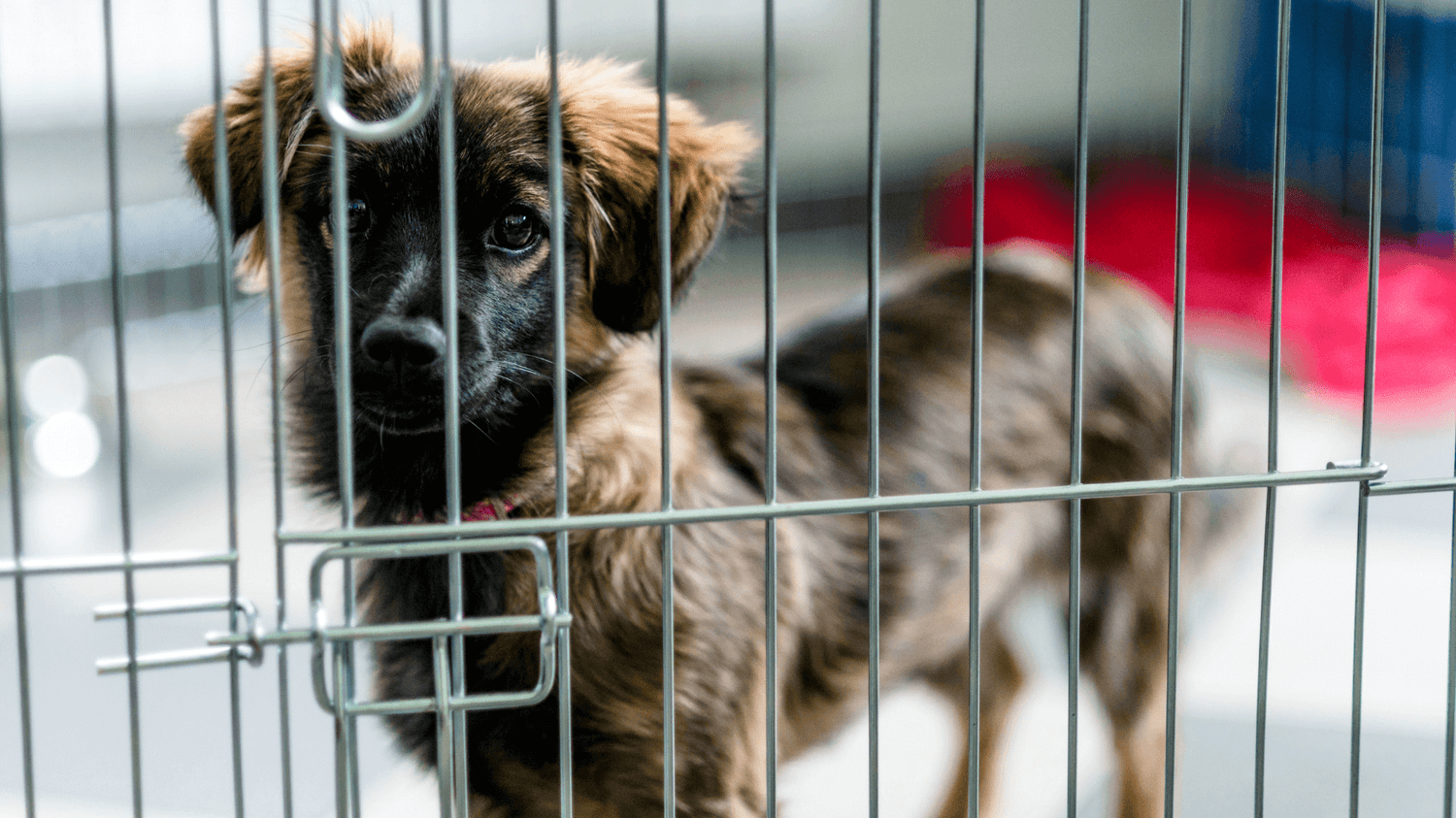Easy Tips for Crate Training a New Puppy or Dog.
With spring finally here, many people are looking for something new - and for some, that means getting a new puppy! One of the first things on a new pet parent's mind is where their pup will sleep. Should you go with the traditional crate, or get them a special pet bed, or even let them sleep in your bed?
When house training a puppy, many people refuse to crate or kennel-train their dogs because they feel the confinement is cruel. However, in most cases this is not true as, rather than a punishment, crates can ease a dog's anxiety and offer them a sense of security in their new home. Just like dog obedience training, crate training - when done properly - is also a highly effective management system that can be a lifesaver for dog owners.
Like any training method, crating can be abused, but using a dog crate for appropriate time periods can be very beneficial as it helps with puppy potty training, preventing destructive behavior, and teaching a dog to settle and relax.
Can crates can be good for dogs?
Yes! If a dog is taught through positive reinforcement to love the crate, the dog crate becomes his own safe place, somewhere he can retire to or seek comfort in, much like a bedroom for a child. It is also a perfect place for the dog to retreat to when he is tired or nervous.
Training your dog to be comfortable in a crate also helps when traveling with your pet, going to the vet or groomer, as they may need need to go into a dog travel crate for a set period of time.
Many dogs take to a crate very easily. But for others it may take time and patience - a puppy's initial response to crate training may be fearful or negative. Even an adult dog may resist going inside a crate. One reason for this is that their movement is initially very restricted. Larger pets especially will find it difficult to relax in a crate because they will have little room to move around.
Things will be even more complicated when bringing home adult or rescue dogs who are already used to roaming freely at home or outdoors. But it is still possible to crate train them when done kindly.

How to Crate-Train Your Dog

To help your pet get used to a crate and have a positive experience with it, many pet experts suggest classic conditioning. This approach consists of counter-conditioning and desensitizing.
To change the negative attitude of the pet to a positive attitude, the following dog training techniques can be used to gain obedience and help your dog become comfortable with the crate.
To help make dog or puppy crate training easier, we recommend the following easy steps:
1. Introduce the Crate to Your Dog
First, make sure that the crate is the right size for your dog. Check out this crate guide for how to measure your dog and determine the correct crate type and size for your dog.
Ensure that the crate is a warm, comfortable place with familiar smells. At first you can even put a blanket that has your smell in the crate. Or add a dog toy or treat to entice them to go in the crate. Leave the door open inviting your dog to come and go as he pleases.
2. Encourage Your Dog to Go In the Crate
Place the crate in or near where your dog eats. At meal time, place food inside the crate so that your dog will want to go inside the crate to eat the food. If they seem hesitant, the crate door may be left open with food or treats placed inside the crate, giving them time to adjust. Once your dog realizes there is no danger, they will return to the crate on a regular basis.
If your dog does not eat the food even after several hours, then remove the food from the crate and feed them, still keeping close to the crate. Gradually, the distance between the crate and the food should be decreased until your dog begins to eat food inside the crate.

3. Use a Special Signal When In Home Dog Training
When the dog begins to voluntarily enter the crate, use a marker word when placing the food inside the crate. Words such as "crate" or "come in" can be used by opening the crate door to put the dog food inside. Some people also use a dog hand training signal instead of a word to tell the dog it's time to enter the crate.
After some time, your dog will begin to associate the crate with the positive experience of getting food or a treat.
Important Tip: If multiple people in the home are training the dog, make sure that everyone in your house uses the same word\signal so as not to confuse the dog.
If your dog is afraid that you may lock him up if he enters the crate, then continue keeping the door open while you move farther and farther away. Encourage your dog to stay inside the crate by offering treats so that they are motivated to stay in rather than follow you out. Once your dog gets used to staying in the crate, try closing the crate door, not altogether, but part way and for a short period of time. After some time you should be able to close the door fully and have your dog stay inside.
4. Increase Crate Time and Crating Your Puppy at Night
If your dog whines when you close the crate, try staying nearby, not paying him attention but close enough that he sees you. Then while your dog is inside, slowly start increasing the distance between you and the crate. Continue using your marker word or signal and encourage the dog to go in and stay in the crate; always rewarding them after.
Keep increasing his crate time until they are able to lie in the crate without complaint for a few hours.
When the puppy is young or new to the home and is still displaying some disruptive or destructive behavior such as chewing furniture, shoes or peeing inside the house, it is even more important to keep them crated at night when you can't watch them. Getting your pup used to staying in the crate longer throughout the day will also help them stay in the crate through the night. If they seem nervous or have trouble settling down, you can use a natural anxiety or dog calming spray to spray the crate or dog bed to keep the dog more relaxed.

5. Continue positive reinforcement
After following these simple yet effective steps, your dog should be content, if not necessarily happy, to enter the crate when he hears your marker word, and stay inside for longer and longer periods of time.
Once your pet is trained with positive reinforcement and food, your can also begin to give him toys to keep him occupied inside the crate. It is a good idea to keep one particular dog toy or treat that is set aside just for those times when your dog needs to go inside the crate.
Don't use this toy at any other time. This way he will also associate the toy or treat with being in the crate and your can use the toy to draw your dog to the crate. Your dog may even look forward to going inside the crate if that is the time when he gets the special treat or toy.
In addition to the value of a crate at home, having a crate-trained dog is wonderful when you are traveling, when your dog needs to go to the vet or groomer, or if you plan to compete in any dog sports. Trained properly with positive reinforcement and patience, the crate becomes a safe place for your dog. You will find that your dog uses the crate on his own when he is tired, and enters willingly and eagerly when asked.
Crates may seem scary or unpleasant, but in time, they may become your pet's safe place. All it takes is an investment of time and a few treats to end up with a happy dog and a happy human!



